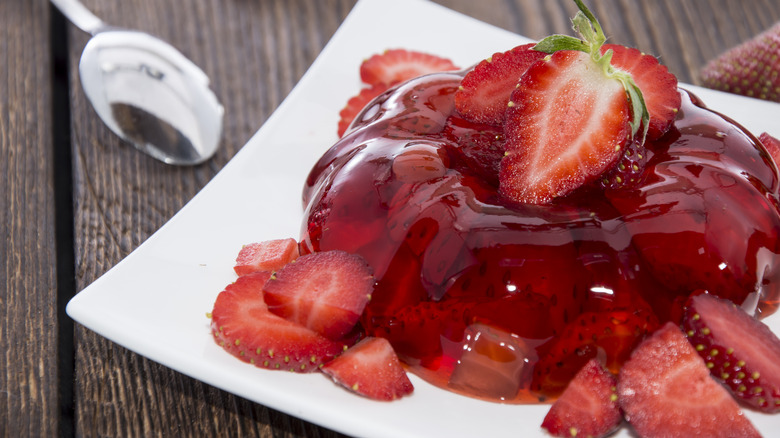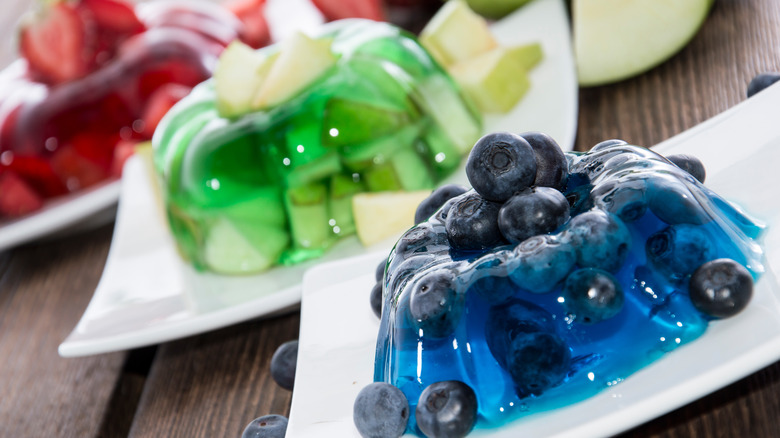Jell-O Has Been Around Longer Than You Think
It's easy to plunk Jell-O in with mid-20th century convenience foods like Hamburger Helper and Cool Whip, but you'd be wrong. The Jell-O we know from school lunch boxes and molded gelatin salads has a long and storied history. In fact, it wasn't even supposed to be a food. According to The Kitchn, Jell-O is a byproduct of an invention gone wrong.
Way back in the 1840s, New York entrepreneur Peter Cooper — the inventor of a mini-sized steam engine that eventually replaced horses on the B&O Railroad (via B&O Railroad Museum) — decided to take on a more domestic task. He wanted to develop a formula for powdered gelatin, a short-cut through the then-arduous task of making gelatin from scratch (via Smithsonian Magazine).
Unfortunately, Cooper was a better inventor than marketer. The substance he successfully created and patented in 1845 (via American Urbex) as a side hustle to his existing glue factory — let that sink in — never took off. Why is anyone's guess, especially when even noted 19th-century cookbook authors like Mary Foote Henderson bemoaned the process that involved boiling calves' feet and straining the gelatinous substance multiple times (via Smithsonian Magazine). "I have made calf's foot jelly twice and never intend to make it again," Henderson wrote 1876 — a good 20 years before another New York inventor took powdered gelatin to the next level.
Fourth time's the charm?
Sometimes a great idea needs a little tweak. That seems to be the case when it comes to the evolution of Cooper's powdered gelatin. About a half century after Cooper, who was highly successful in other ventures, including founding Cooper Union in 1859, lost interest in marketing his invention, another New Yorker picked up the ball.
In 1897, LeRoy, New York carpenter Pearle Wait was working with powdered gelatin to create a cough remedy and laxative tea (via Jell-O Gallery). After he added a fruit flavor to the product, his wife, May, came up with the name Jell-O. Unfortunately, the Waits also hit a dead-end when they tried to market the jiggly treat and, just two years later, sold their product to another LeRoy, New York resident, Orator Frank Woodward, for a paltry $450. Unlike the Waits, Woodward had experience and money. He had successfully manufactured and marketed products ranging from composition balls for target shooting to a product that killed lice on hens, but he, too, stumbled with Jello-O, frustratedly selling the whole kit-and-kaboodle on a whim to Andrew Samuel Nico for just $35.
In 1900, the JELL-O name was first used by the Genesee Pure Food Company and after a successful campaign, Jell-O sales reached $250,000 in 1902.

